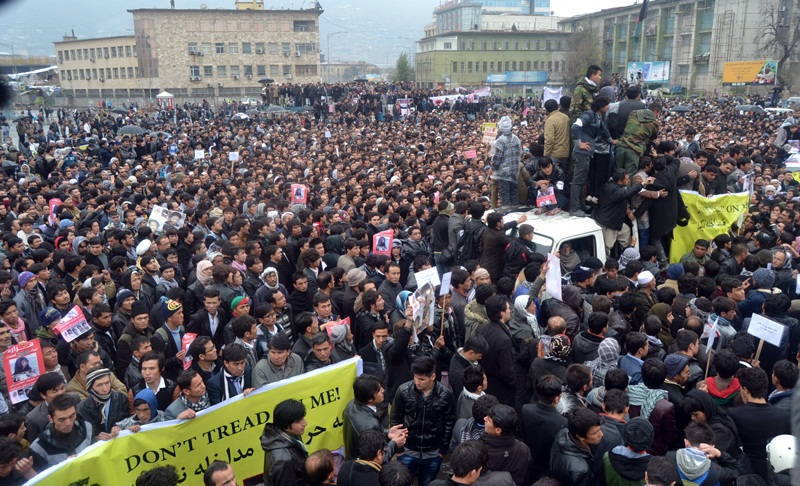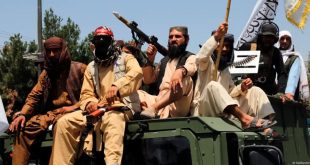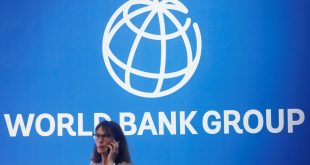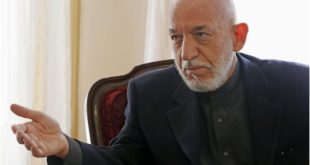By Afrasiab Khattak-8th of April was yet another watershed moment for the hardly three months old Pashtun Tahafuz Movement (PTM). In fact it was a milestone on the path of redefining Pashtun political discourse in Pakistan. But it is also pertinent to note that this development has significant implications for political discourse all over Pakistan. After squandering the last few years in the creeping coup, the scripted sit-ins, weaponizing religion and judicialization of power games, the country can ignore deep alienation and simmering unrest in FATA, Balochistan and Gilgit-Baltistan at its own peril. By holding a huge gathering of tens of thousands of enthusiastic Pashtuns in Peshawar, the administrative capital of Pakhtunkhwa and political capital of 45 million plus Pashtuns in Pakistan, the newly born PTM has made its mark in popular politics. Earlier the young leaders of this new movement demonstrated their popularity by marching in the southern belt of Pashtuns and by addressing a series of huge gatherings in Zhob, Qilla Saifullah and Quetta. PTM has originated in Waziristan which is located in the south of Khyber Pakhtunkhwa. But even a cursory glance at the map reveals that it is in middle of Pashtun lands on the eastern side of the Durand Line. By linking up to historical centers of Quetta in the south and to Peshawar in the north through mass mobilisation, PTM has already become a political force to be reckoned with.
The impressive aspect of this successful mass mobilisation is that Manzoor Pashteen and his young team could achieve it without any formal organisational structure and despite being totally blacked out by most of the so called mainstream media. It is for the first time that a nascent sociopolitical movement has successfully beaten back the monopoly of state controlled and corporate electronic and print media on access to information by the effective use of social media for spreading its message. This achievement is remarkable for the youth of a marginalised people living in an ‘excluded area’ under the yet to be reformed colonial structures. But it is also important to remember that a strong wave of solidarity across the ethnic and regional boundaries attracted by the movement made this achievement possible.
As we know the deep pain, agonies and humiliation of war and displacement generate narratives and stories which aren’t reflected in the official press releases about the situation and become mere statistics. But PTM has provided a platform where these narratives and personal stories can be shared and recorded. This is the first step towards getting out of the trauma of war and displacement. The massive turn up of the families of the victims of enforced disappearances is yet another characteristic of this nascent movement. Manzoor Pashteen has made it clear that he is not demanding the release of persons accused of committing crimes. He only wants their production in courts for due process. But enforced disappearance of thousands of people is a very grave challenge on human rights front and cannot be ignored.
The Pashto songs sung by thousands in chorus express the deep desire of Pashtuns to reclaim their land, their culture and their dignity destroyed by terrorism and state oppression. The growing participation of women in the rallies gives strength to the movement. Interestingly far from being passive spectators women activists can be seen delivering passionate speeches, raising slogans and singing revolutionary songs. Hearing the speeches of PTM leaders it isn’t difficult to understand that they belong to a generation which has come to know the Pakistani state through its military. Manzoor Pashteen is 26 years old now. In 2002 when military was inducted in FATA on a large scale he was 8 years old. In the last eighteen years he has seen a decade when FATA was left at the mercy of terrorists. They killed the local people with impunity as the state did not act against terrorism with an eye on Taliban’s war in Afghanistan. Ali Wazir, the second most prominent leader of PTM, has lost more than a dozen members of his immediate and extended family to terrorism. Then there were military operations in which common people suffered more because of the double games played by the state. Prolonged curfews were particularly disturbing for a population that had lived without proper state control for centuries. Displacement brought new kinds of suffering and humiliation on the one hand but on the other hand exposed them to urban experiences and influences generating a higher level of sociopolitical consciousness. On their return the IDPs could not put up with the total disempowerment that waited for them back home. The lava accumulated through all these troubles and tribulations was waiting for eruption.
The insinuations coming from the GHQ about the “engineered” nature of PTM are simply shocking. Those who have raised no objection over Afghan Taliban Amir accepting oath of allegiance of Pakistani Taliban are perturbed over popularity of Pashteen cap across the Durand Line as an act of solidarity for peace in both countries ! PTM has repeatedly stated that it stands for the rights of oppressed people within the limits of Pakistani Constitution but the intelligence agencies are orchestrating artificial and so called demonstrations against PTM to give the impression as if the the youth movement is a threat for the country. It is particularly weird in a country where 139 UN designated terrorist entities don’t face the type of hounding and maligning that is faced by a grass roots non violent human rights movement.
Last but not the least is the question of relationship of PTM with established political parties in general and nationalist political parties in particular. Political parties have been generally cautious in responding to a new grass roots movement but they have also shown restraint in view of the popular support demonstrated by PTM. It is my considered opinion that nationalist parties shouldn’t be worried because of two factors. One, it is after all the seeding of Pashtun nationalist movement which has sprouted in the form of the new movement. The leaders of PTM commit themselves to the political legacy of Bacha Khan and Khan Shaheed, the founding fathers of the nationalist movement in 20th century. Two the epicentre of the new movement is FATA Pashtuns where the old parties didn’t have sufficient presence. If handled deftly the new movement is complimentary and not contrarian to broad Pashtun national movement. In fact PTM is warming up to the idea of broader democratic movement by addressing the concerns of oppressed people all over Pakistan.
The writer is a retired Senator and an analyst of regional affairs.
 Afghanistan Times
Afghanistan Times




